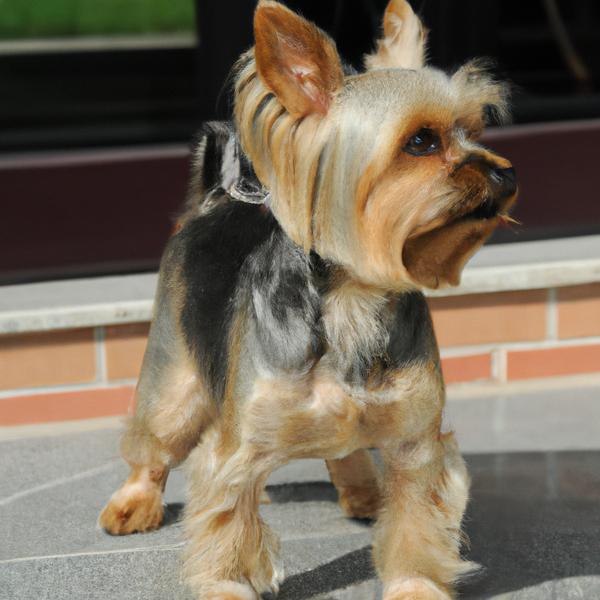Yorkinese vs. Doxie Scot: Breed Differences and Similarities
Hypoallergenic
Are Yorkineses or Doxie Scots hypoallergenic, or neither?
Unfortunately, neither Yorkinese nor Doxie Scot are hypoallergenic, which may not make them the best choice for dog lovers who suffer from pet allergies.
Temperament
What are the personalities of Yorkinese and Doxie Scot dogs?
Playful
Stubborn
Independent
Energetic
Alert
Courageous
Intelligent
Affectionate
Loyal
Aggressive
Good-natured
Opinionated
Playful
Stubborn
Independent
Alert
Courageous
Quick
Devoted
Lively
Selfish
Clever
Shedding Level
Do Yorkineses shed more than Doxie Scots, or which breed sheds more, Yorkineses or Doxie Scots?
Yorkineses are low shedding dogs, requiring minimal coat care.
Doxie Scots shed very little hair, making them a great choice for those who dislike excess hair in the house.
Watchdog Ability
Which dog breed makes a better watchdog, the Yorkinese or Doxie Scot?
Avoid Yorkineses as watchdogs - they're not effective.
Doxie Scots aren't great guard dogs; they tend to just watch without taking action.
Origin
What is the origin of Yorkinese and Doxie Scot dog breeds?
United States
United States
Ancestry
What are the origins of Yorkinese and Doxie Scot breeds?
Yorkshire Terrier, Pekingese
Scottish Terrier, Dachshund
Breed recognition
Which kennel clubs recognize/register Yorkinese and Doxie Scot?
ACHC = American Canine Hybrid Club
DDKC = Designer Dogs Kennel Club
DRA = Dog Registry of America, Inc.
IDCR = International Designer Canine Registry®
DBR = Designer Breed Registry
ACHC = American Canine Hybrid Club
DBR = Designer Breed Registry
DDKC = Designer Dogs Kennel Club
DRA = Dog Registry of America, Inc.
IDCR = International Designer Canine Registry®
Date of Birth
When were Yorkinese and Doxie Scot breeds first developed?
Unknown
Eye Color Possibilites
What are the eye colors of Yorkinese and Doxie Scot dogs?
Brown
Brown
Nose Color Possibilites
What are the natural nose colors of Yorkinese and Doxie Scot?
Black
Black
Coat Color Possibilites
What are the natural colors of the coat for Yorkinese and Doxie Scot breeds?
Black
Fawn
Cream
Brindle
Gray
Blue
Silver
Black
Brown
Red
White
Coat Length
What is the typical coat length for Yorkinese and Doxie Scot breeds?
Yorkineses are known for their coat length.
Doxie Scots have medium-length coats.
Coat Density
What is the density of the coat of Yorkinese and Doxie Scot?
Coat Texture
What is the hair texture of Yorkinese and Doxie Scot?
Straight
Wiry
Litter Size
What is the usual litter size for Yorkinese and Doxie Scot?
A Yorkinese can have a litter of 4-6 puppies on average. However, it's worth noting that the size of the litters can vary greatly. Factors that can influence litter size include the health of the mother, breeding history, and genetics.
A Doxie Scot can have a litter of 4-8 puppies on average. However, it's worth noting that the size of the litters can vary greatly. Factors that can influence litter size include the health of the mother, breeding history, and genetics.
Adaptability
Yorkineses are highly adaptable and versatile, making them excellent companions for families and individuals of all lifestyles.
Doxie Scots are known for their adaptability and can adjust well to different environments and lifestyle changes.
Health Issues
Between Yorkinese and Doxie Scot, which breed is more prone to health problems?
The Yorkinese and Doxie Scot breeds are commonly healthy with low vet costs, regular check-ups may not be as necessary but it's important to keep an eye on their health and have them checked by a veterinarian when needed.
Major Concerns
What are the major health concerns for Yorkinese and Doxie Scot breeds?
Patellar Luxation
Entropion
Portacaval Shunt
Tracheal Collapse
Skin Fold Dermatitis
Legg-Calve-Perthes Disease
Brachycephalic Syndrome
Exposure Keratopathy Syndrome
Intervertebral Disc Disease
Hip Dysplasia
Minor Concerns
What minor health issues should be kept in mind when owning Yorkinese and Doxie Scot?
KCS
Hydrocephalus
Eye Disease
Mitral Valve Disease
Patellar Luxation
Cataracts
Glaucoma
Von Willebrand's Disease
Cushing's Disease
Occasional Tests
What occasional tests are recommended for Yorkinese and Doxie Scot breeds?
Knee
X-Rays
Eye Examination
Physical Examination
Endoscopy
Respiratory Tests
Heart Testing
Eye Examination
Physical Examination
Radiographs
Blood Tests
Energy
How do the energy levels of Yorkineses and Doxie Scots compare?
Yorkinese and Doxie Scot breeds may be a good choice for those who prefer a more relaxed lifestyle. They tend to have a lower energy level than other breeds of dogs.
Social Needs
Yorkinese vs Doxie Scot social needs comparison
Yorkinese and Doxie Scot have above average social needs compared to other breeds. They thrive in environments where they have a lot of interaction with humans and other dogs.
Exercise Needed
Yorkinese vs Doxie Scot exercise need comparison.
Yorkineses need only a small amount of physical activity, ideal for busy or elderly people or those with limited space.
Doxie Scots require minimal physical activity for a healthy lifestyle.
Sleeping Need
Which of the two sleeps the most/least: Yorkinese or Doxie Scot?
Yorkinese and Doxie Scot breeds are known to have moderate energy levels and normal sleep patterns, typically sleeping around 12-14 hours per day.
Tendency to Bark
Do Yorkineses or Doxie Scots bark more/less frequently?
Yorkinese and Doxie Scots tend to bark moderately, they bark when necessary, such as to alert their owner or to communicate something. They may also bark due to certain triggers like fear, alarm, boredom, greeting, separation anxiety and compulsive barking.
Mouthiness
Mouthiness Comparison: Yorkinese vs Doxie Scot?
Roaming urge
Yorkinese vs Labrador: Running away tendency?
Prey Drive
Yorkinese or Doxie Scot - which breed has a higher level of prey drive?
Past times
What are some enjoyable activities and ways to keep Yorkinese and Doxie Scot entertained?
Playing, Chasing kitty, Brushing, Car rides, Walks, Chase, Tug-of-war, Laser, Wrestling, Walk, Fetch, Walking, Playing fetch, Catch, Everything, Catch ball, Chase tail, Frisbee, Tug of war, Cuddling, Sleeping, Exploring, Play, Loving, Dog Parks, Running, Playdate, Ball
Chase, Fetch, Run, Walk, Sleep, Play, Tug-of-war, Being outdoors, Cuddle
Activity Level
Which breed has higher energy, Yorkineses or Doxie Scots?
Both Yorkinese and Doxie Scot are medium-energy dogs that enjoy socializing and playing with other dogs. They may engage in casual or sustained games of chase, and occasionally have bursts of barking or racing around the house.
Tolerance of being left alone
Walks per Week
How many miles should Yorkinese or Doxie Scot walk each week?
There's really no limit to how far you walk your dog as long as they're comfortable. For Yorkinese, it's at least 6 miles / week. Just remember to build distance and stamina gradually over time.
There's really no limit to how far you walk your dog as long as they're comfortable. For Doxie Scot, it's at least 4 miles / week. Just remember to build distance and stamina gradually over time.
Activity per Day
Do Yorkineses or Doxie Scots require more exercise?
In general most Yorkineses usually need at least 30 minutes of exercise daily. This can be spread across the day and include all sorts of high-energy activities, like walking, running and playing.
In general most Doxie Scots usually need at least 60 minutes of exercise daily. This can be spread across the day and include all sorts of high-energy activities, like walking, running and playing.
Grooming
Which breed is easier to maintain in terms of grooming, Yorkineses or Doxie Scots?
Yorkineses have high grooming needs, requiring regular trims and professional grooming assistance to keep their coat healthy.
The Doxie Scot requires an average amount of grooming compared to other breeds.
Brushing Frequency
What is the recommended brushing frequency for Yorkinese and Doxie Scot dogs?
Ideally, Yorkinese should be brushed at least 2 or 3 times a week (preferably daily) improve shedding.
Doxie Scot should be brushed at least once a week. Of course you can give them more frequent brushes if you find that they are still shedding a lot
Brushing Tools
What brushing tools are used for Yorkineses and Doxie Scots?
Pin Brush
Slicker Brush
Dematter
Scissors
Pin Brush
Slicker Brush
Comb
Nail Clipper
Cups
How much food should be given to Yorkinese or Doxie Scot in cups?
Yorkinese and Doxie Scot share the same recommended daily food intake of 1 cups, although the appropriate quantity may vary depending on the quality and nutritional content of their food.
Daily Cost
Which breed has a higher daily cost, Yorkinese or Doxie Scot?
Yorkinese and Doxie Scot have a similar average daily cost of around $1.10 - $1.40.
Monthly Cost
Which breed has a higher monthly cost, Yorkinese or Doxie Scot?
The average per month expenses of a Yorkinese is between $34 - $42. This makes an average of $408 - $504 per year. It will be on the higher side when the dog is still small because it will need more frequent visits to the vet, shots.
The average per month expenses of a Doxie Scot is between $28 - $42. This makes an average of $336 - $504 per year. It will be on the higher side when the dog is still small because it will need more frequent visits to the vet, shots.
Intelligence
Comparing Intelligence: Yorkineses vs Doxie Scots
Yorkinese is an independent and stubborn breed with low obedience intelligence, making training a test of patience.
Doxie Scots are average in obedience intelligence but have a high IQ and may cause trouble if left unsupervised.
Sensitivity Level
How do Yorkinese and Doxie Scot compare in sensitivity?
These breeds are more sensitive than others and easily overwhelmed by new surroundings and people. Yorkinese and Doxie Scot need gentle handling and a calm, stable home environment with positive reinforcement training.
Affection Dependance
Which is the more affectionate dog breed: Yorkinese vs Doxie Scot?
Apartment Friendly
Which breed is more apartment-friendly: Yorkinese or Doxie Scot?
Yorkineses and Doxie Scots are known for being excellent apartment dogs. They are fairly active indoors and will do okay without a yard.
Child Friendly
Do Yorkineses or Doxie Scots have a friendlier temperament towards children?
Yorkineses are not suitable for children.
Doxie Scots have an average level of friendliness towards children.
Senior-friendly
Which dog is more suitable as a pet for the elderly - Yorkinese or Doxie Scot?
Cat Friendly
Do Yorkinese or Doxie Scot breeds have a better compatibility with cats?
Yorkineses are very friendly with cats and make great companions for them.
Doxie Scots are average in their friendliness toward cats and tend to do well with them, especially if raised together.
Dog Friendly
Which breed is more sociable with other dogs: Yorkinese or Doxie Scot?
Yorkineses are average in their friendliness towards other dogs, and socialization can help.
Doxie Scots are less friendly towards other dogs, but can improve with socialization.
Pet friendly
How do Yorkinese or Doxie Scot dogs interact with other pets?
Stranger Friendly
Which breed is more friendly with strangers: Yorkinese or Doxie Scot?
Yorkinese and Doxie Scot are average friendly around strangers. They can be wary around strangers and a little standoffish, so early socialization is key to ensure they are comfortable around new people.
Playfulness
Which breed is more playful between Yorkinese and Doxie Scot?
Yorkineses are not known for being a highly playful breed.
Doxie Scots have an average level of playfulness, enjoying playtime like most dogs but not excessively so.
Trainability
How do the trainability levels of Yorkineses and Doxie Scots compare?
Yorkinese and Doxie Scot dogs are known for their ease of training and ability to learn quickly, making them a popular choice for pet owners and trainers alike.
Compare Yorkinese with other breeds
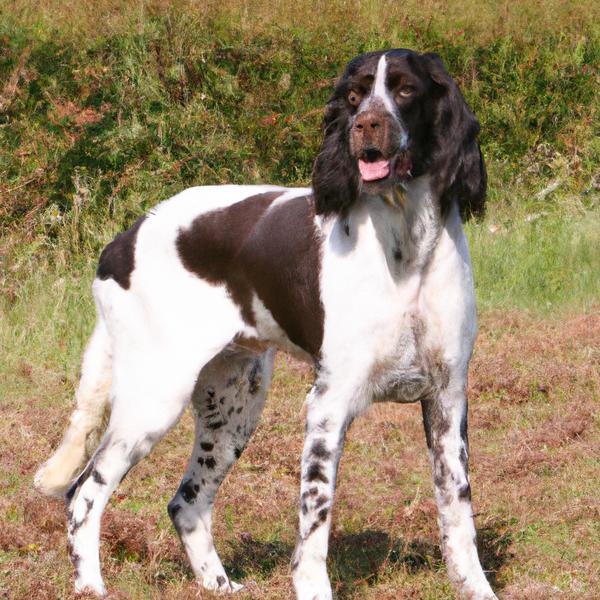
English Sprointer
Yorkinese vs English Sprointer
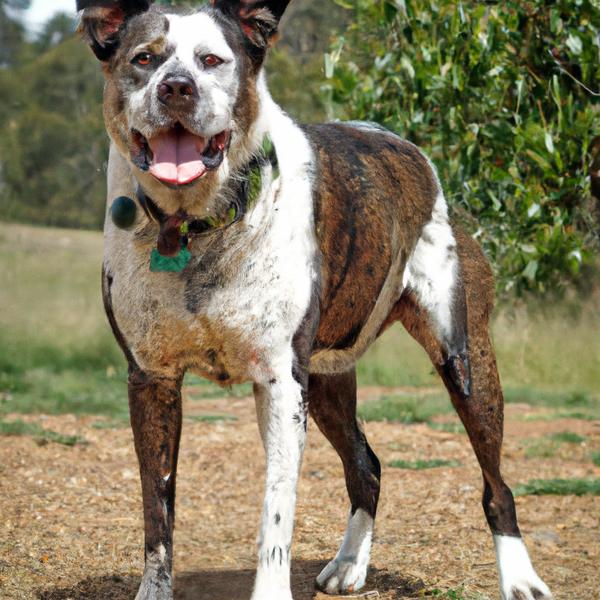
Australian Boxherd
Yorkinese vs Australian Boxherd

Boston Huahua
Yorkinese vs Boston Huahua

Lab-Pointer
Yorkinese vs Lab-Pointer
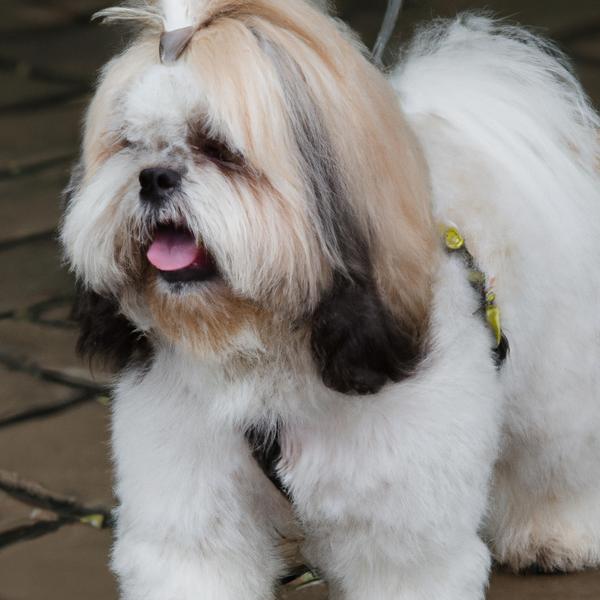
Enga-Apso
Yorkinese vs Enga-Apso
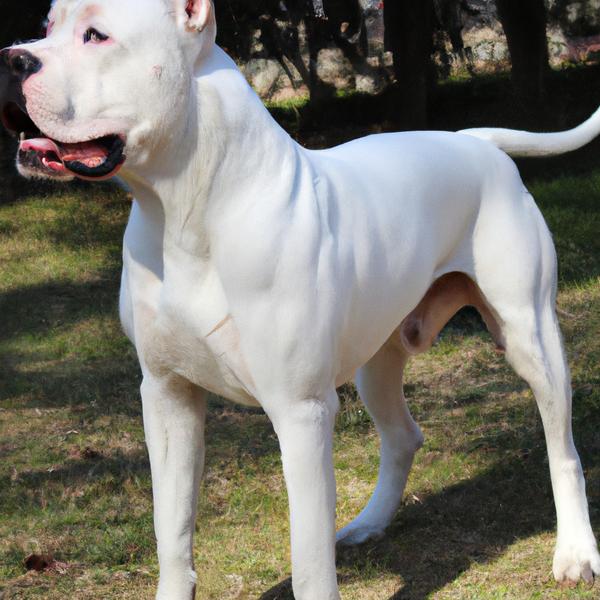
Dogo Argentino
Yorkinese vs Dogo Argentino
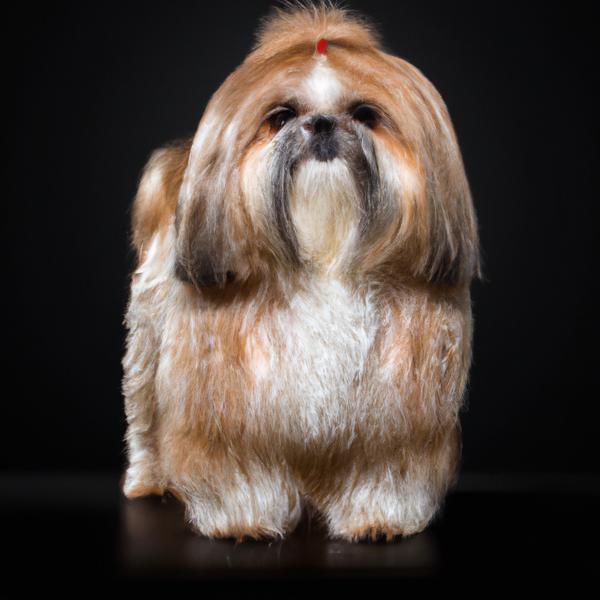
Silky Tzu
Yorkinese vs Silky Tzu

Doxie-Chon
Yorkinese vs Doxie-Chon

Pugese
Yorkinese vs Pugese

Kokoni
Yorkinese vs Kokoni

Australian Eskimo
Yorkinese vs Australian Eskimo
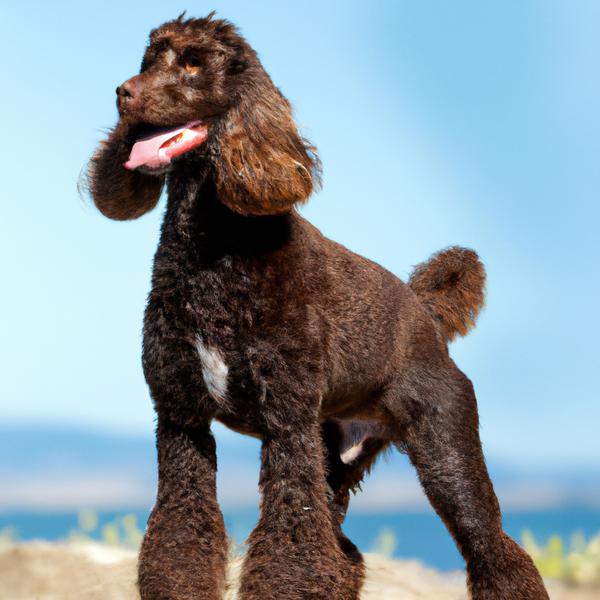
American Water Spaniel
Yorkinese vs American Water Spaniel
